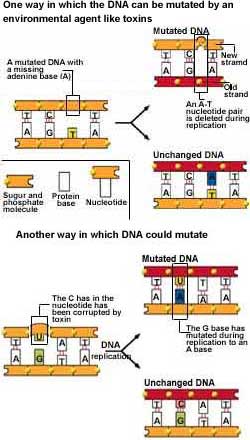How do mutated genes replicate?
 Students of genetics are often taught how mutations may occur in DNA under environmental stress by being asked to do a simple experiment. During the experiment students damage the DNA of yeast cells by exposing them to ultraviolet (UV) light. For normal yeast cells this treatment might not be a problem since yeast cells have mechanisms to repair damaged DNA. However, the strain of yeast used in this experiment has a defect in its DNA repair mechanism so that DNA damage cannot be fixed. The mutant yeast cells exposed to UV light can no longer function and die.
Students of genetics are often taught how mutations may occur in DNA under environmental stress by being asked to do a simple experiment. During the experiment students damage the DNA of yeast cells by exposing them to ultraviolet (UV) light. For normal yeast cells this treatment might not be a problem since yeast cells have mechanisms to repair damaged DNA. However, the strain of yeast used in this experiment has a defect in its DNA repair mechanism so that DNA damage cannot be fixed. The mutant yeast cells exposed to UV light can no longer function and die.
Normal human cells can be similarly damaged by ultraviolet light. One situation in which we can observe the effects of UV damage to our cells is when the genes are damaged are the ones required to trigger and end to the process of cell division that keeps cells from replicating and dividing. A skin cell containing this damaged DNA might receive a "start' signal to begin dividing, but not be able to "stop'. The cell would continue to divide and to divide and to divide, eventually becoming a cancerous growth, a skin tumor.
